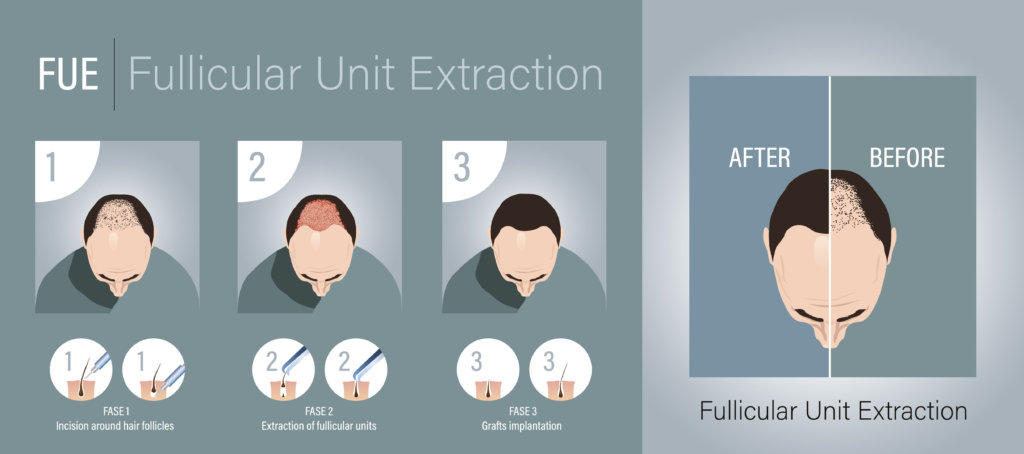Understanding DHI (Direct Hair Implantation) and FUE (Follicular Unit Extraction) transplants and their key differences is important before determining which approach is the right one for you.
About DHI Transplant
- From Newbie to Innovator – DHI is relatively fresh on the hair transplant scene but has refined conventional techniques to stand out.
- Procedure in Focus – The standout aspect of DHI is the absence of the usual holes or slits. Hair follicles are moved directly from the donor area, typically the back of the scalp, straight to the balding region.
- The DHI Advantage – By leveraging cutting-edge tools and a direct methodology, DHI not only reduces scalp trauma but also enhances the viability of transplanted hairs.
- Find out more about the DHI Transplant here and view the frequently asked questions.
Understanding FUE Transplant
- Proven and Trusted – FUE isn’t a newcomer. It’s a trailblazer, transforming hair transplants by cutting down on scarring.
- The How-To – Professionals practicing FUE extract individual hair follicles. Once that’s done, they make minute incisions in the target area and implant these follicles.
- Why Choose FUE? – FUE is lauded for its ability to offer a more natural finish, accompanied by significantly less scarring compared to the earlier strip method.
- Find out more about the FUE Transplant here and view some of our before and after images as well as the frequently asked questions.
Comparison of DHI and FUE Transplant
- Technique and Tools
- DHI: Meet the Choi Implanter Pen, DHI’s ace. This tool expedites the transplant, positioning hair follicles at precise depths and angles for uniform results.
- FUE: FUE’s method relies on a micro-punch tool. After extraction, the hair is manually placed in the previously made incisions.
- Time Investment
- DHI: DHI is a more drawn-out affair. Each follicle is set right after extraction, minimizing its exposure outside.
- FUE: FUE, when in the hands of an expert, is more streamlined. Extraction happens first, followed by implantation.
- Post-Procedure Recovery
- DHI: Swift healing is a perk with DHI, as the Choi pen’s direct implantation cuts down on incision numbers.
- FUE: Recovery could be slightly extended due to the small incisions needed for each follicle.
- Precision and Aesthetic Appeal
- DHI: The Choi Implanter Pen ensures meticulous follicle placement, promising dense, natural results.
- FUE: While FUE also offers excellent results, the final look depends on the surgeon’s skill in replicating natural hair growth.
- Aftermath on the Scalp
- DHI: DHI is gentler, leaving behind scars that are hard to spot.
- FUE: FUE might leave tiny dot scars, which, though minor, are slightly more visible than DHI’s aftermath.
Which Method Should You Choose?
Your decision will depend on your own individual circumstances as well as understanding DHI and FUE transplants advantages and disadvantages.
- Budgetary Constraints – DHI, with its specialized equipment and detailed process, might be on the pricier side.
- Hair Density – If precision-packed hair is your end goal, DHI is a strong contender.
- Speedy Recover – DHI slightly leads the race here, offering a faster return to daily routines.
- Hair Loss Extent – Larger bald areas? FUE could be your go-to.
However, while research offers insights, nothing beats personalized advice. A hair transplant specialist can evaluate your unique needs and guide you. Beyond just understanding the techniques, they’ll consider factors like your hair health, genetics, and lifestyle. Ready to find the perfect solution for your hair? Schedule a consultation with Regrow Hair here.






